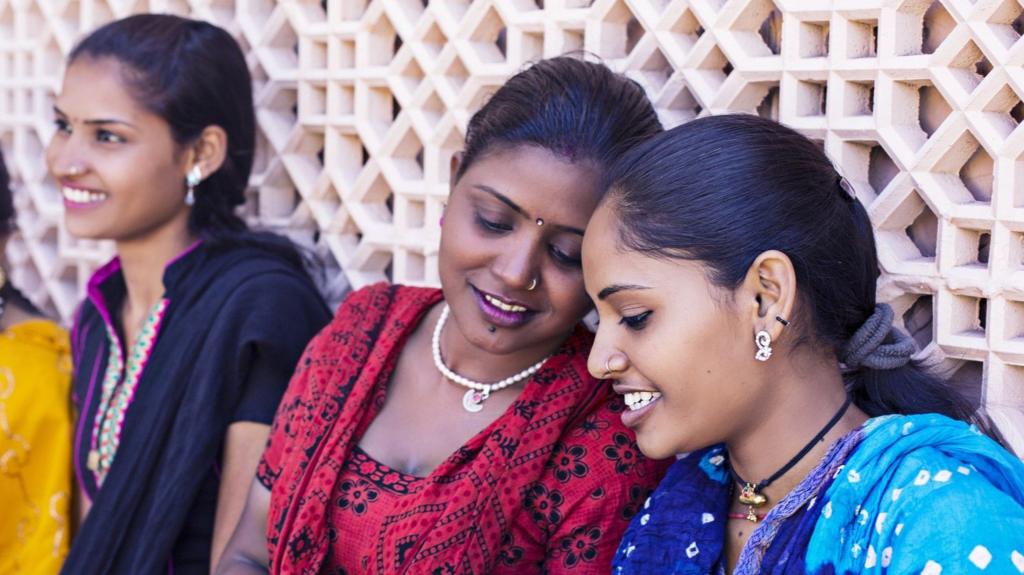Vineet Sawant has spent the past two years navigating the bustling streets of Mumbai as a delivery driver on a scooter.
“Being on the road is always very stressful, especially in cities like Mumbai,” he notes.
Upon starting his role, language barriers presented an additional hurdle.
As a native Marathi speaker, Mr. Sawant admits to speaking “very little” English, clarifying, “I can understand some, but reading is very difficult.”
This linguistic gap posed challenges in his new position.
“At first, it was difficult. Everything was in English, and while I could understand some of it, I’m more comfortable in Marathi. I often asked other delivery drivers for help understanding my tasks,” he recounts.
His employer, Zepto, known for its promise of “India’s Fastest Online Grocery Delivery,” recognized that drivers struggling with delivery instructions was far from ideal.
To address this, Zepto partnered with Reverie Language Technologies a year ago, integrating an AI translation service for its drivers.
Since then, drivers have been able to choose from six languages within the Zepto app.
“I don’t have to guess anymore,” Mr. Sawant shares.
“Previously, I would spend more time reading and sometimes make mistakes. Now, if a customer writes ‘ring bell,’ I receive that instruction in Marathi. I no longer need to ask or double-check – it’s all clear.”
Mr. Sawant’s experiences are not uncommon in India.
“India boasts 22 official languages and hundreds of dialects,” explains Professor Pushpak Bhattacharyya of IIT Mumbai, a leading expert in the application of AI to Indian languages.
He emphasizes, “Without technology that understands and communicates in these languages, millions are excluded from the digital revolution – particularly in education, governance, healthcare, and banking.”
The rise of generative AI systems, like ChatGPT, has made this need even more pressing.
AI models are trained using vast quantities of data, such as web pages, books, and video transcripts.
While this data is relatively easy to obtain for widely spoken languages like Hindi and English, it is more scarce for others.
Professor Bhattacharyya notes, “The main challenge in creating Indian language models is the availability of data – refined data. Coarse quality data is available, but it needs filtering as it is not of a very high standard.”
“The issue in India is that for many Indian languages, especially tribal and regional dialects, this data simply doesn’t exist or hasn’t been digitized.”
Reverie Language Technologies is now deploying its AI-driven translation technology for a variety of Indian companies.
Co-founder Vivekananda Pani acknowledges that while translation technology will simplify communication, there is a “potential for less common dialects to be pushed aside.”
“The challenge will be ensuring that the incredible benefits of AI-driven language advancements don’t inadvertently diminish the rich diversity of human language.”
To address this, Professor Bhattacharyya has contributed to Bhashini, a government project aimed at developing the high-quality datasets required to train AI models.
In addition to datasets, Bhashini has developed AI language models and translation services in 22 languages.
Launched in 2022, it’s an ambitious undertaking that has already made significant strides.
Bhashini currently hosts 350 AI-based language models that have processed over a billion tasks.
More than 50 government departments and 25 state governments are collaborating with Bhashini.
For instance, Bhashini’s technology is used in multilingual chatbots for public services and to translate government initiatives into local languages.
“Bhashini ensures India’s linguistic and cultural representation by building India-specific AI models rather than relying on global platforms,” states Amitabh Nag, CEO of Digital India, Bhashini Division.
He anticipates that within the next two to three years, rural users will have voice-enabled access to government services, financial tools, and information systems in their native languages.
These India-focused datasets are expected to provide AI developers with the necessary tools to adapt their models for the entire population.
Currently, designing AI programs for complex processes like healthcare can be exceptionally challenging.
Kshitij Jadhav, an associate professor at the Koita Centre for Digital Health at IIT Mumbai, is developing an AI program to help people quit smoking.
He explains that individuals at different stages of quitting require different advice, typically requiring a trained professional for assessment.
However, there are a limited number of practitioners available, especially those proficient in multiple languages, so Professor Jadhav hopes his AI model can bridge the gap.
The AI “will first identify the type of conversation the person needs and accordingly will frame questions, show empathy, [and express] emotions,” Professor Jadhav explains.
Ultimately, this is intended to be available in 22 languages, with initial experiments underway in English and Hindi.
“It will be very customized; it will not be something just off the shelf,” he emphasizes.
Back in Mumbai, Vineet Sawant has increased his daily deliveries from ten to around 30 parcels, partly due to the translation function in the delivery app.
He believes it will help many others like him.
“It makes us feel like we belong. Not everyone understands English. When the app speaks our language, we feel more confident, and we work better.”
The US will hold its levy on Chinese imports at 30%, while China will keep a 10% tariff on American goods.
Rescue operations at the disaster site have been hampered by heavy rains and blocked roads.
Trump’s volatile trade policy has thrown the world economy into chaos, and put some US prices up.
Many fear they could lose the long-standing support that sustained the community after the current Dalai Lama passes away.
The chip giants will hand revenues to the US government in exchange for licences to export to China.

